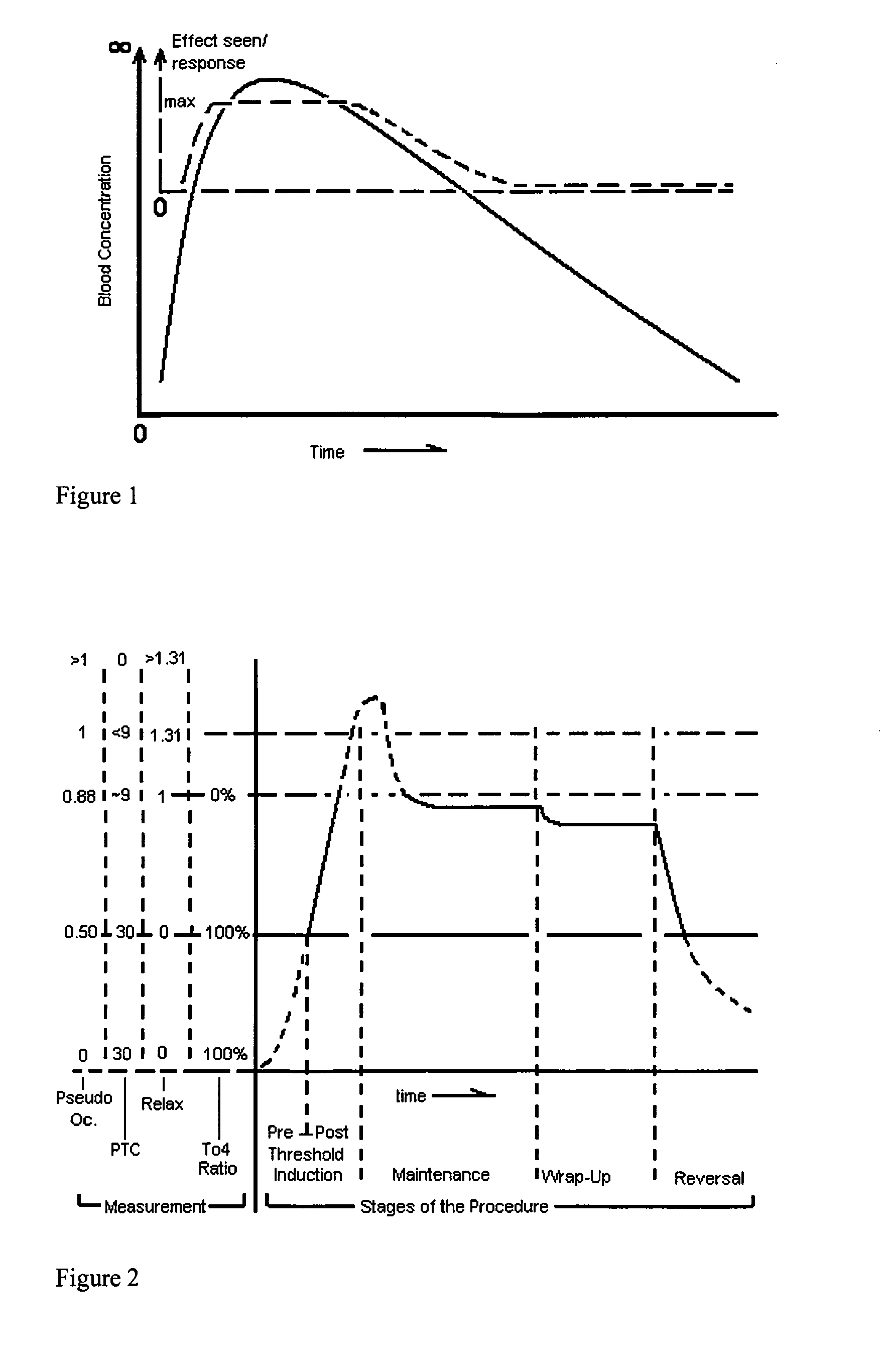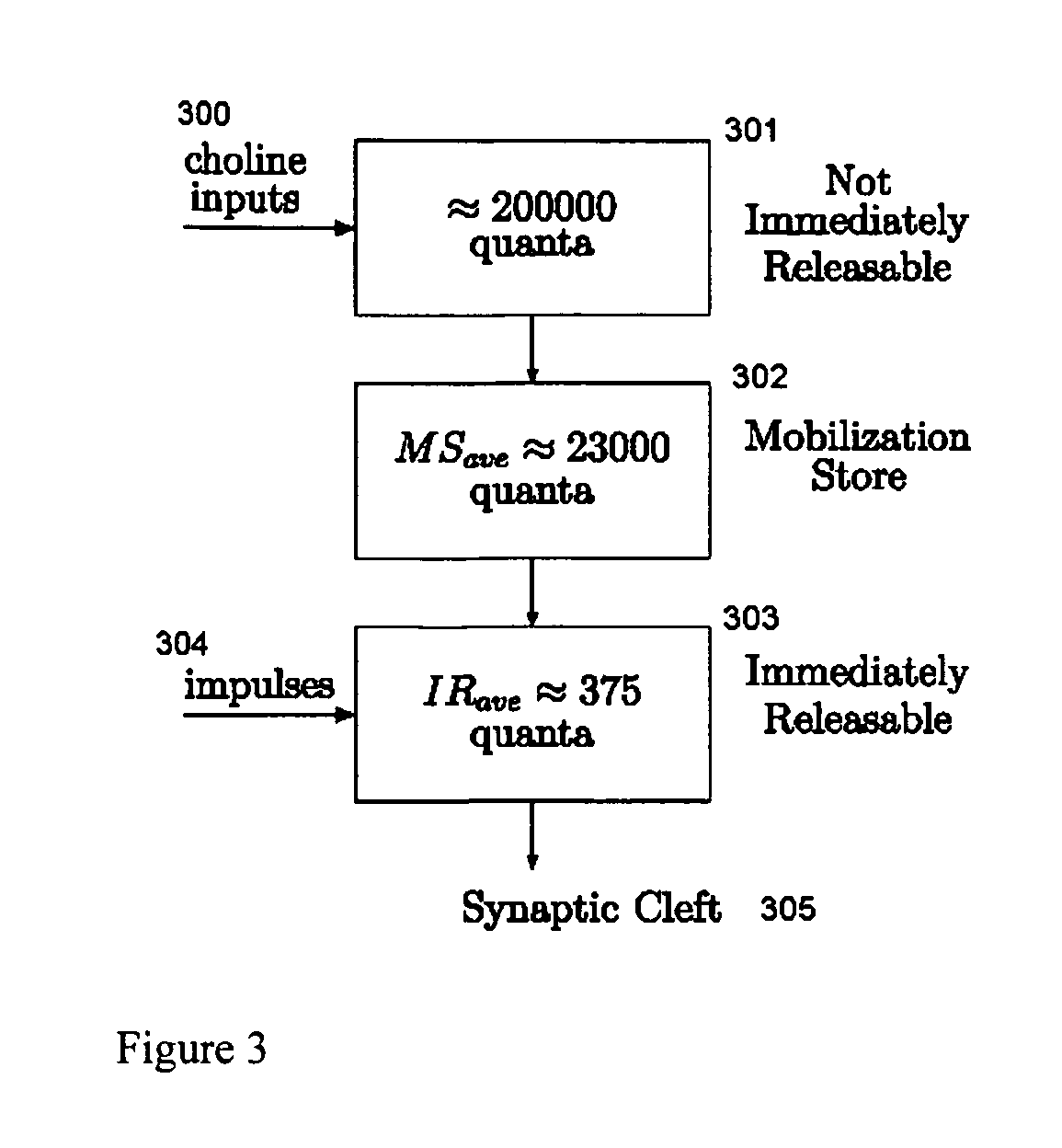Improved sensors and sensing for monitoring neuromuscular blockade
a neuromuscular blockade and sensor technology, applied in the field of improved sensors and sensing for monitoring neuromuscular blockade, can solve the problems of inability to manage patient variance, inability to trust automated systems, and difficulty in computer control of drug therapies, so as to facilitate and plan overstimulation, increase data availability, and equal success probability
- Summary
- Abstract
- Description
- Claims
- Application Information
AI Technical Summary
Benefits of technology
Problems solved by technology
Method used
Image
Examples
example implementation
[0156]A Neuromuscular Blockade Advisory System (NMBAS) advises anesthesiologists on rocuronium dose magnitude and timing for maintenance of NMB at surgically favorable, yet easily reversible levels. A prospective randomized, controlled clinical trial was conducted to investigate the safety and effectiveness of an NMBAS that incorporated some of the methods and systems discussed in this application.
[0157]A prospective, randomized, controlled, clinical trial was conducted with n=73 patients (ASA physical status IIII) undergoing abdominal surgery under general anesthesia=1.5 h with neuromuscular blockade using rocuronium. Patients were allocated to standard care or NMBAS-guided rocuronium administration. The primary outcome variable was the incidence of intraoperative events reflecting inadequate NMB. Secondary outcome variables included TOF ratios at reversal and extubation; the total doses of rocuronium, reversal agents, anesthetics, and other drugs; the incidence of postoperative ad...
PUM
 Login to View More
Login to View More Abstract
Description
Claims
Application Information
 Login to View More
Login to View More - R&D
- Intellectual Property
- Life Sciences
- Materials
- Tech Scout
- Unparalleled Data Quality
- Higher Quality Content
- 60% Fewer Hallucinations
Browse by: Latest US Patents, China's latest patents, Technical Efficacy Thesaurus, Application Domain, Technology Topic, Popular Technical Reports.
© 2025 PatSnap. All rights reserved.Legal|Privacy policy|Modern Slavery Act Transparency Statement|Sitemap|About US| Contact US: help@patsnap.com



